Building of the Day: 129-131 Montague Street
Brooklyn, one building at a time. Name: Commercial building Address: 129-131 Montague Street Cross Streets: Corner Henry Street Neighborhood: Brooklyn Heights Year Built: 1929 Architectural Style: Classically inspired Art Deco Architect: Unknown Landmarked: Yes, part of Brooklyn Heights HD (1965) The story: This is a very busy corner of Brooklyn Heights, at the heart of…
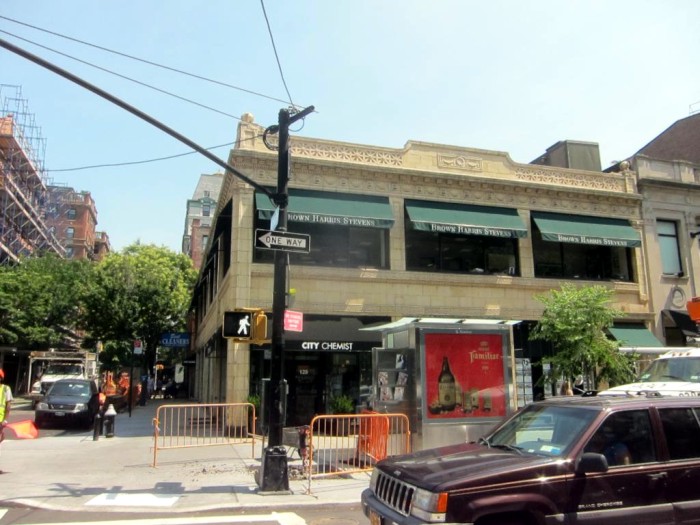

Brooklyn, one building at a time.
Name: Commercial building
Address: 129-131 Montague Street
Cross Streets: Corner Henry Street
Neighborhood: Brooklyn Heights
Year Built: 1929
Architectural Style: Classically inspired Art Deco
Architect: Unknown
Landmarked: Yes, part of Brooklyn Heights HD (1965)
The story: This is a very busy corner of Brooklyn Heights, at the heart of Montague Street’s business district, so it should come as no surprise that this location has had a lot going on here over the years. However, when Brooklyn Heights was developing as a brownstone and masonry residential neighborhood, much of Montague Street was lined with fine homes. The businesses came much later. The 1855 city map of Brooklyn shows a large 100×100 foot lot here, with a 50×50 foot building on the corner. This building was the mansion shown in the photograph from the Brooklyn Public Library below, called the Rushmore House.
The Rushmore House belonged to Dr. John D. Rushmore, a prominent surgeon and professor of surgery at Long Island College Hospital. Over his long career he became Dean of Faculty and Chief of Surgery at the hospital. He purchased it in 1889 from the estate of its original owner, Dr. Chauncey L. Mitchell, who had had the mansion built in 1850. It was a huge three stories and attic Italianate brownstone house with a low stoop and tall parlor floor windows. When it was built, the plot included the land next door, but by 1884, city maps show that that land had been made a separate lot, although it was not built upon until the 1920s.
Dr. Rushmore owned this large home until he sold it in 1926, but he may have moved out well beforehand. The building was listed as the address of the Brooklyn Real Estate Exchange in 1922. In 1926, the Brooklyn Eagle noted that this storied old building was one of the oldest in the Heights, but was going to fall to the wrecking ball as it needed to make way for progress, here on “Brooklyn’s Wall Street.” The building that would replace it was supposed to be a modern office building for physicians. Well, that never happened.
Instead, a two story office building went up in the footprint of the house. Most likely, the dawning of the Great Depression put a kibosh on building a much taller building. The two story building was referred to as a “taxpayer” in a much later 1946 article, so there was not a whole lot of respect for this building. It’s not bad, but was never the office building the developers who bought the property dreamed of. It opened in 1929 with three tenants: Ebinger’s Bakery on the first floor, and Nemerov & Nemerov Realty and Management sharing the second floor with the Hub Agency, an insurance company. Nemerov & Nemerov was an up and coming firm at the time, in charge of the rentals at the nearby Court-Montague Building, the Leverich Hotel and the newly built Turner Towers, Brooklyn’s largest apartment building, on Eastern Parkway.
Throughout the 20th century, the building had many different tenants, as “Brooklyn’s Wall Street” changed, and changed again. In the early 1950s, this was home to the Chemical Insecticide Corporation. The mid-1950s saw the second floor belonging to the Gilbert Elementary School, a private school for “slow and average students.” They specialized in remedial programs in reading, writing and math skills, and also had remedial classes for slower learning high school students in the evening.
Photographs of the building in 1958 show Ebinger’s still a tenant, as well Bon-Ton Meats, with a corner lunch counter called the Pam Pam Restaurant taking up most of the first floor. Upstairs was the Brooklyn Juvenile Guidance Center. By the time I got to Brooklyn, in the early 1980s, the entire store was a Waldenbooks, where I spent a lot of time and money. I was really upset when they closed. The building was empty for quite some time. Today, upstairs is once again the home of a real estate company, this time Brown Harris Stevens, and downstairs is the newish home of City Chemists. Not quite doctors’ offices, as Dr. Rushmore had been told, but the closest thing yet. GMAP
(Photo: Nicholas Strini for PropertyShark)
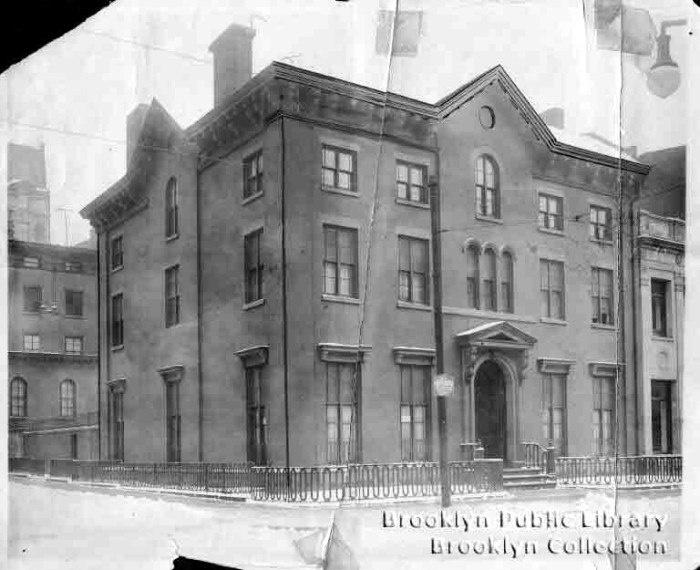
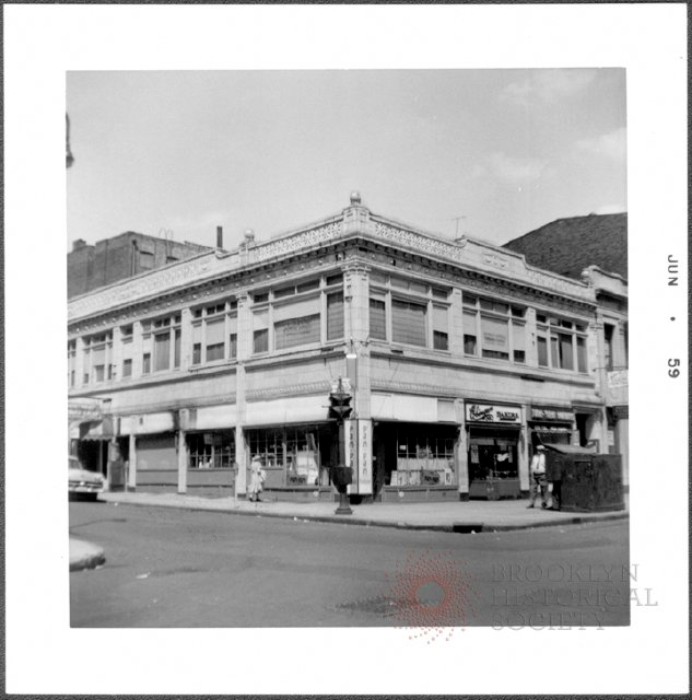
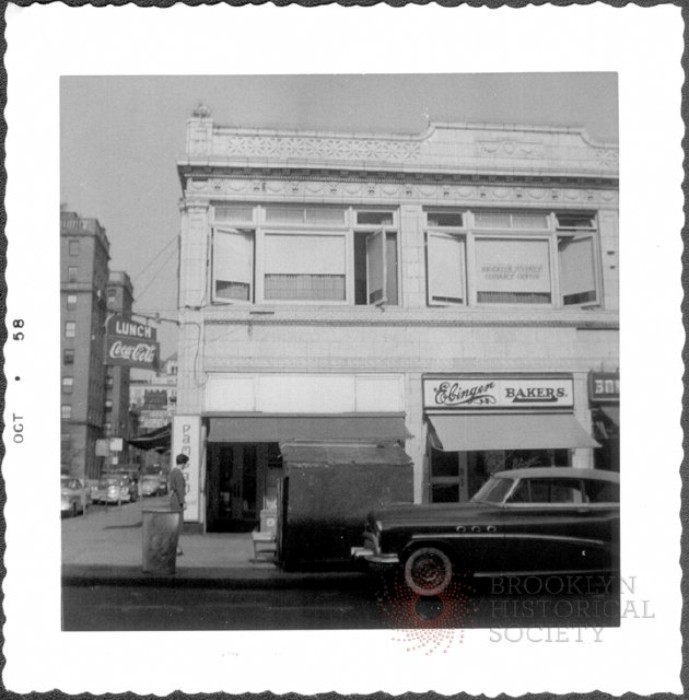
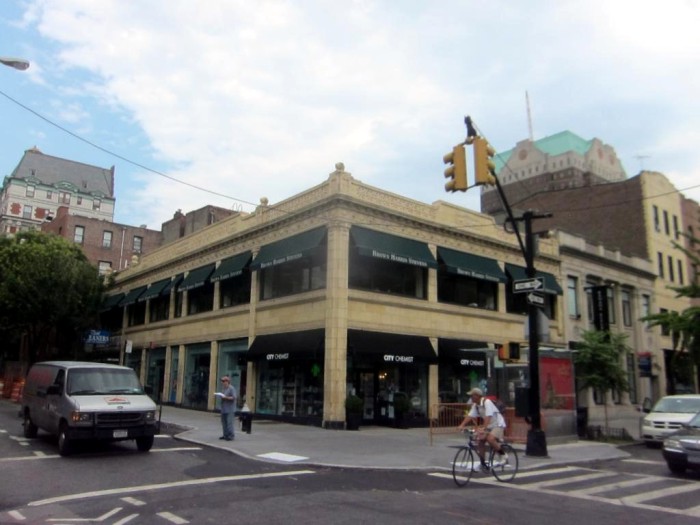

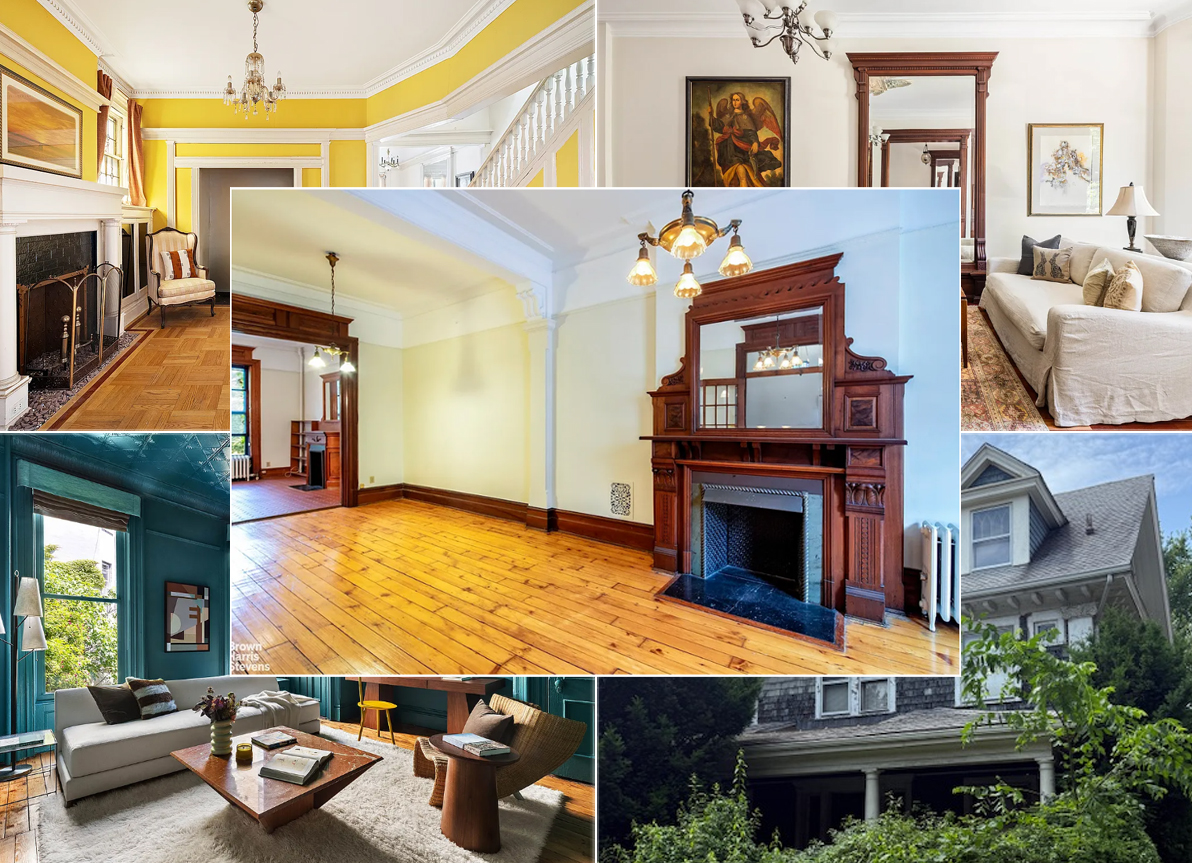



Back when Burger King closed, the Brooklyn Heights Press ran an article about the subsequent renovation and the finding of a basement room, which the paper suggested may have been used as a speakeasy. Don’t remember much came of that.
I don’t know when it closed, but when I used to work at the Municipal Building from 1992-1995, the Waldenbooks was there. I remember fine spring and summer lunch hours walking inside and browsing. It was a nice stop on the way to the promenade.